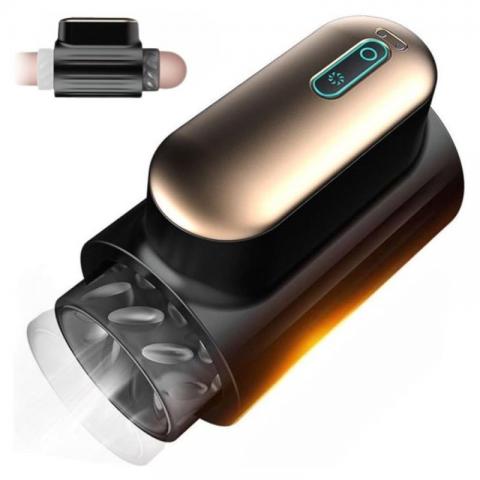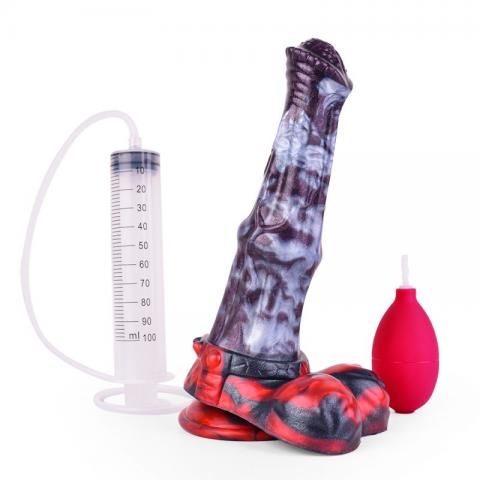Login
 USD $
USD $
 AUD AUD
AUD AUD CAD CAD
CAD CAD GBP £
GBP £ EUR €
EUR €
All Categories
(0) My Cart (0)
LambskinMushroom DildoNew ArrivalCheap
pleated filter cartridge factory
high flow filter cartridge
large flow filter cartridge
membrane pleated filter cartridge
capsule filter suppliers
capsule filter 0.2 micron
capsule filter price
capsule filter
water filter cartridge
New Products
How many ways does AIDS spread? The probability of each mode of transmission is different.
AIDS, also known as human immunodeficiency virus (Human Immunodeficiency Virus or HIV), as its name implies, can cause defects in the human immune system. Human immunodeficiency virus (HIV) was first discovered in the United States in 1983. It is a lentivirus (Lentivirus) that infects cells of the human immune system and is a retrovirus. So far, there is no effective treatment for fatal infectious diseases. The virus destroys the immune capacity of the human body, causing the immune system to lose resistance, resulting in a variety of diseases and cancers to survive in the human body, and eventually lead to AIDS (acquired immunodeficiency syndrome).
What are the ways of transmission of AIDS?
Although HIV-infected people look the same as normal people, their blood, semen, vaginal secretions, damaged skin and mucous membranes or inflammatory ulcers all contain a large amount of HIV, which is highly contagious; milk also contains viruses and is contagious. The virus can also be found in saliva, tears, sweat and urine, but it contains very little virus and is not contagious.
It has been confirmed that there are three main ways of transmission of AIDS, its core is through sexual transmission and blood transmission, general contact can not spread AIDS, so AIDS patients should not be discriminated against in life, such as eating together, shaking hands and so on will not spread AIDS.
(1) sexual contact transmission: including sexual contact between the same sex and the opposite sex. Anal sex and oral sex have a greater risk of infection.
(2) Blood transmission: including: ① transfusion of blood or blood products contaminated with HIV; ② intravenous drug addicts sharing unsterilized needles and syringes contaminated by HIV; and ③ sharing other medical devices or household appliances (such as sharing toothbrushes and razors with infected persons) may also be transmitted through damaged areas, but it is rare. ④ syringes and needles are not thoroughly sterilized or not sterilized kick ass , especially for children who do not have a single shot and tube for preventive injection. Dental instruments, midwifery instruments, surgical instruments and needles for acupuncture treatment are not strictly or disinfected; knives, needles for hairdressing and cosmetology (such as eyebrow tattoos, ear piercings), tattoos and pedicure knives in the bathroom are not sterilized; sharing razors, razors, or toothbrushes with others Transfusion of blood or blood products from blood donors who have not been tested for HIV antibodies, as well as transfusion of bone marrow and organs in similar cases; when rescuing the bleeding wounded, the damaged skin of the rescuer comes into contact with the blood of the injured.
(3) Mother-to-child transmission: also known as perinatal transmission, that is, mothers infected with HIV transmit HIV to their fetus or baby before, during and shortly after delivery. It can be transmitted through the placenta g spot vibrator , through the birth canal during delivery, or through lactation.
The disease is mainly transmitted through sexual contact, especially homosexuality and intravenous drugs, followed by therapeutic export and injection of blood products, delivery and breastfeeding can also cause infection. High-risk groups are: homosexuals, sexual disorders and people with multiple sexual partners, intravenous drug addicts, those who receive blood transfusions and blood products, hemophilia patients, children whose parents are AIDS patients. Recently, it is believed that patients with venereal diseases, especially those with genital ulcers (such as syphilis, chancre, genital herpes) should also be listed as high-risk groups for AIDS.
Whether it is the same sex, the opposite sex, or sexual contact between the two sexes will lead to the spread of AIDS. There is a large amount of virus in the semen or vaginal secretions of people infected with AIDS. during sexual activities (including vaginal intercourse, anal intercourse and oral intercourse), it is easy to cause slight damage to the genital mucosa due to the friction of the sexual intercourse site. At this time, the virus will take advantage of the opportunity to enter the blood of the uninfected. It is worth mentioning that because the intestinal wall of the rectum is more easily damaged than the vaginal wall, the risk of anal intercourse is greater than that of vaginal intercourse.
Blood transmission is the most direct way of infection. It is dangerous to infuse virus-contaminated blood and use syringes, acupuncture needles and tooth extraction tools that are contaminated with blood and have not been strictly sterilized. In addition, if you share an unsterilized syringe with a person infected with HIV, you will also be infected by the virus left in the needle.
Infection probability of various modes of transmission of AIDS
The probability of transmission of AIDS-- transmission through blood
Intravenous drug abuse: sharing syringes or lax disinfection of syringes among intravenous drug users is a dangerous behavior of HIV infection, and the transmission probability of a single exposure is 0.67%. Receiving blood or blood products: mainly refers to receiving blood or blood products contaminated with HIV. The transmission probability of a single exposure is between 90% and 100%.
Iatrogenic infection: mainly refers to unclean medical devices, causing people receiving medical services to be infected with HIV, including health care workers in the provision of medical services, exposed to the body fluids of infected persons / patients, resulting in infection of HIV. Inadvertently contaminated HIV appliances such as needles stabbing the skin, or mucous membranes in direct contact with body fluids containing HIV, the probability of transmission in a single exposure is 0.3%-0.5%.
Probability of transmission of AIDS-transmission through sexual contact
At present, transmission through sexual contact is the main route of transmission of HIV in the world. About 70% or 80% of people infected with HIV are infected through sexual contact, of which heterosexual sexual contact accounts for more than 70%, while gay sexual contact accounts for 5% to 10%. When an unprotected sexual intercourse occurs magic wands , the probability of transmitting HIV among gay men is about 0.503%. In heterosexual sexual contact, the probability of transmission from male to female is 0.1-0.2%, and that from female to male is 0.03-0.1%.
The probability of transmission of AIDS-mother-to-child transmission
Mothers infected with HIV can transmit HIV to their babies during pregnancy, during childbirth or after breastfeeding, and the chance of mother-to-child transmission is about 30%.
Realistic dildo | best vibrator | pvc dildo | fat pocket pussy
What are the ways of transmission of AIDS?
Although HIV-infected people look the same as normal people, their blood, semen, vaginal secretions, damaged skin and mucous membranes or inflammatory ulcers all contain a large amount of HIV, which is highly contagious; milk also contains viruses and is contagious. The virus can also be found in saliva, tears, sweat and urine, but it contains very little virus and is not contagious.
It has been confirmed that there are three main ways of transmission of AIDS, its core is through sexual transmission and blood transmission, general contact can not spread AIDS, so AIDS patients should not be discriminated against in life, such as eating together, shaking hands and so on will not spread AIDS.
(1) sexual contact transmission: including sexual contact between the same sex and the opposite sex. Anal sex and oral sex have a greater risk of infection.
(2) Blood transmission: including: ① transfusion of blood or blood products contaminated with HIV; ② intravenous drug addicts sharing unsterilized needles and syringes contaminated by HIV; and ③ sharing other medical devices or household appliances (such as sharing toothbrushes and razors with infected persons) may also be transmitted through damaged areas, but it is rare. ④ syringes and needles are not thoroughly sterilized or not sterilized kick ass , especially for children who do not have a single shot and tube for preventive injection. Dental instruments, midwifery instruments, surgical instruments and needles for acupuncture treatment are not strictly or disinfected; knives, needles for hairdressing and cosmetology (such as eyebrow tattoos, ear piercings), tattoos and pedicure knives in the bathroom are not sterilized; sharing razors, razors, or toothbrushes with others Transfusion of blood or blood products from blood donors who have not been tested for HIV antibodies, as well as transfusion of bone marrow and organs in similar cases; when rescuing the bleeding wounded, the damaged skin of the rescuer comes into contact with the blood of the injured.
(3) Mother-to-child transmission: also known as perinatal transmission, that is, mothers infected with HIV transmit HIV to their fetus or baby before, during and shortly after delivery. It can be transmitted through the placenta g spot vibrator , through the birth canal during delivery, or through lactation.
The disease is mainly transmitted through sexual contact, especially homosexuality and intravenous drugs, followed by therapeutic export and injection of blood products, delivery and breastfeeding can also cause infection. High-risk groups are: homosexuals, sexual disorders and people with multiple sexual partners, intravenous drug addicts, those who receive blood transfusions and blood products, hemophilia patients, children whose parents are AIDS patients. Recently, it is believed that patients with venereal diseases, especially those with genital ulcers (such as syphilis, chancre, genital herpes) should also be listed as high-risk groups for AIDS.
Whether it is the same sex, the opposite sex, or sexual contact between the two sexes will lead to the spread of AIDS. There is a large amount of virus in the semen or vaginal secretions of people infected with AIDS. during sexual activities (including vaginal intercourse, anal intercourse and oral intercourse), it is easy to cause slight damage to the genital mucosa due to the friction of the sexual intercourse site. At this time, the virus will take advantage of the opportunity to enter the blood of the uninfected. It is worth mentioning that because the intestinal wall of the rectum is more easily damaged than the vaginal wall, the risk of anal intercourse is greater than that of vaginal intercourse.
Blood transmission is the most direct way of infection. It is dangerous to infuse virus-contaminated blood and use syringes, acupuncture needles and tooth extraction tools that are contaminated with blood and have not been strictly sterilized. In addition, if you share an unsterilized syringe with a person infected with HIV, you will also be infected by the virus left in the needle.
Infection probability of various modes of transmission of AIDS
The probability of transmission of AIDS-- transmission through blood
Intravenous drug abuse: sharing syringes or lax disinfection of syringes among intravenous drug users is a dangerous behavior of HIV infection, and the transmission probability of a single exposure is 0.67%. Receiving blood or blood products: mainly refers to receiving blood or blood products contaminated with HIV. The transmission probability of a single exposure is between 90% and 100%.
Iatrogenic infection: mainly refers to unclean medical devices, causing people receiving medical services to be infected with HIV, including health care workers in the provision of medical services, exposed to the body fluids of infected persons / patients, resulting in infection of HIV. Inadvertently contaminated HIV appliances such as needles stabbing the skin, or mucous membranes in direct contact with body fluids containing HIV, the probability of transmission in a single exposure is 0.3%-0.5%.
Probability of transmission of AIDS-transmission through sexual contact
At present, transmission through sexual contact is the main route of transmission of HIV in the world. About 70% or 80% of people infected with HIV are infected through sexual contact, of which heterosexual sexual contact accounts for more than 70%, while gay sexual contact accounts for 5% to 10%. When an unprotected sexual intercourse occurs magic wands , the probability of transmitting HIV among gay men is about 0.503%. In heterosexual sexual contact, the probability of transmission from male to female is 0.1-0.2%, and that from female to male is 0.03-0.1%.
The probability of transmission of AIDS-mother-to-child transmission
Mothers infected with HIV can transmit HIV to their babies during pregnancy, during childbirth or after breastfeeding, and the chance of mother-to-child transmission is about 30%.
Realistic dildo | best vibrator | pvc dildo | fat pocket pussy

- Bear Cock Ring
- $0.62
Read More huge dildo
Subscribe for Join Us!
Subcribe to get $10 OFF for order.
- Information
- About us
- Contact us
- Customer Service
- Privacy Policy
- Return Policy
- Shopping Guide
- Payment Methods
- Products
- Dildos
- Vibrators
- Penis Pumps
- Masturbation Cup
- Love Egg
- Contact Us
- [email protected]
- Room 1003, Chevalier House, 188 Chatham Road South, Tsim Sha Tsui, Kowloon, Hong Kong
CopyRight © wlovew.com 2002-2025













-
Follow Us On WhatsApp
My Cart (0)
Follow Us On WhatsApp












